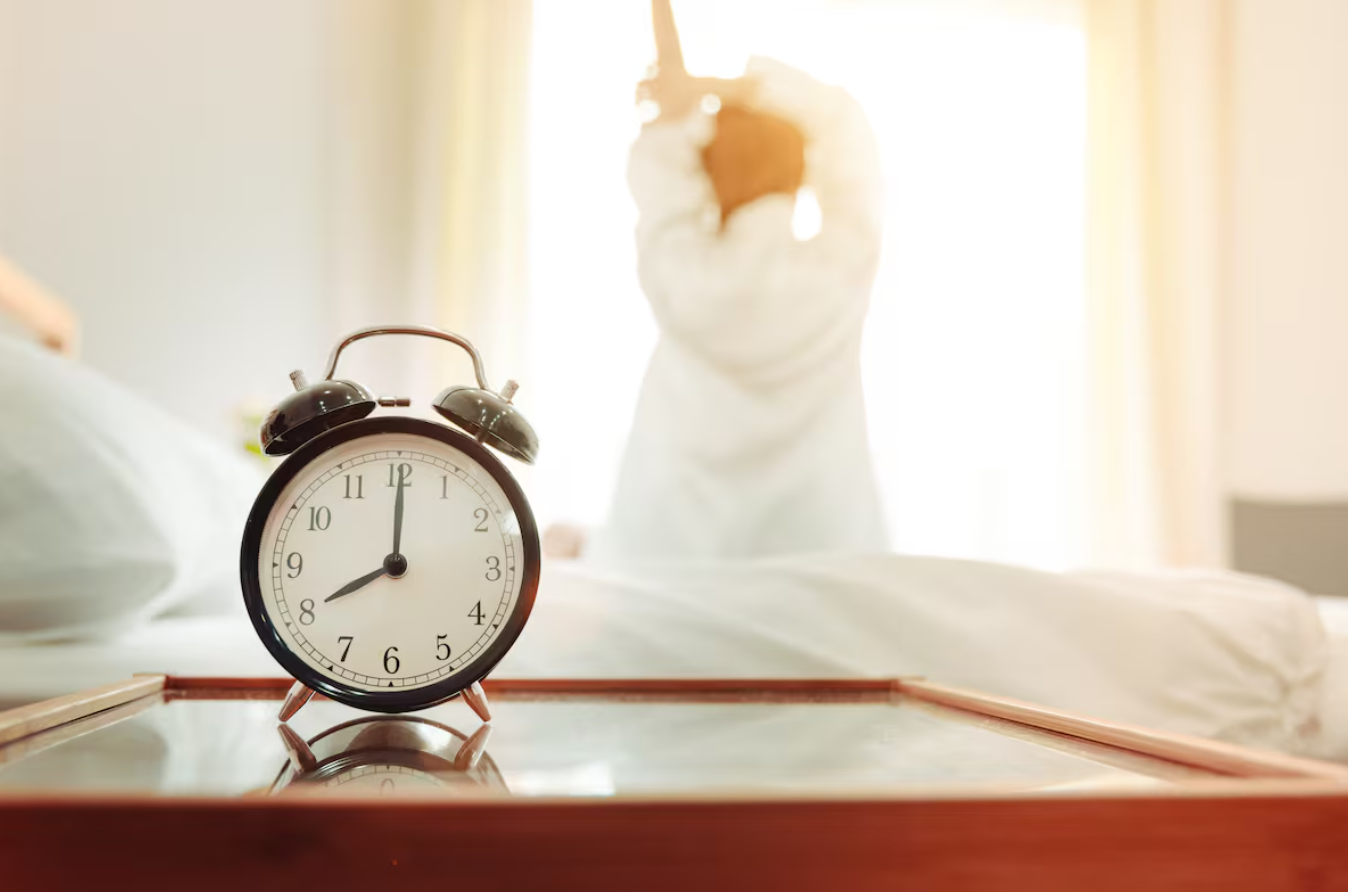
Present Simple (Daily Routine)

Make a list of daily activities
First, you need to think about your daily activities. You can make a list of everyday activities:
- wake up/get up
- brush my teeth
- have/eat breakfast (or ‘have something FOR breakfast’)
- have a shower
- get dressed
- go to work/school
- get to work/school
- check my emails
- check my social media
- work ON my computer
- have lessons
- have/eat lunch
- finish work
- go home
- get home
- walk my dog
- do my homework
- surf the internet
- go running
- go to the gym
- have/eat dinner
- read
- watch TV
- go to bed
🔍 Note that we say go/get home (NOT go/get to home), and we say go/get to school, go/get to work and go to bed (NOT go to the school/work/bed)
You can learn the different ways to use the verb go here.
Write present simple sentences
When we talk about routines or habits, we use the present simple. So we can write present simple sentences using the verbs in our list of activities: I have a shower. I brush my teeth. I have coffee and toast for breakfast. Etc.

Use adverbs of frequency
If we use some adverbs of frequency in our sentences, our text will be better. For example, I usually have coffee and toast for breakfast, but sometimes I don’t have breakfast.
Use connectors and time expressions
Connectors
Now we should add connectors in our text, such as and, or, but, because, so.
For example, imagine we have these two sentences: I get up at 7.30. I brush my teeth. They sound like a list. So we can use and to put the two sentences together: I get up at 7:30 and I brush my teeth.
Time expressions
In addition, you should use time words to connect the different sentences. Some time words are:
- After that, …
- After breakfast/work/school/dinner
- In the morning/afternoon/evening, …
- At (time), …
- Then, …
- Next, …
- … and then …
- When I …
- … from (time) to (time)
Look at this text:
I get up at 7:30 and I brush my teeth. I have a shower and get dressed. I have breakfast and prepare my lunch. I drive to work.
Now look at the same text with time expressions:
I get up at 7:00 and I brush my teeth. After that, I have a shower and get dressed. Then, I have breakfast and I prepare my lunch. Next, I drive to work.
The second paragraph sounds much better.
Write three paragraphs
We can organise the sentences into three paragraphs:
- Paragraph 1: My morning activities
- Paragraph 2: Activities during the day
- Paragraph 3: Evening activities
Example:
I get up at 7:00 and I brush my teeth. After that, I have a shower and get dressed. Then, I have breakfast and I prepare my lunch. Next, I drive to work.
When I get to work at 8:30, I usually check my emails and work on the computer. At 1:00, I have lunch with my co-workers. After that, we work until 5:30 and then I go home. I get home at around 6.
After work, I usually go running or I read. Then I make my lunch. I usually have a salad and some fruit, but on Fridays, I often eat pizza. Next, I watch some TV and I go to bed.
